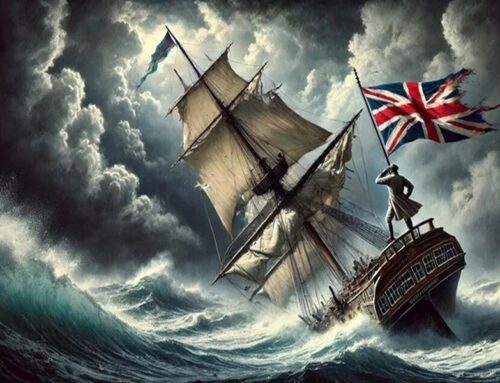Insurance Panorama – 30-08-2014
April 15th 2012 marks the centenary of the sinking of the RMS in the North Atlantic Ocean whilst en route to New York, from Southampton, England, via Cherbourg in France and Queenstown, Ireland
She was on her maiden voyage and all was going well until she struck an iceberg at twenty minutes to midnight on the 14th April 2012, causing a buckling of her hull plates and the failure of the rivets holding those plates together, allowing the sea to enter her in a volume that was too great and which, in the space of less than three hours, was to overwhelm her. As she dipped further into the ocean by the head the strain on her hull became too much for the structure, causing her to split in two. As her stern rose high out of the water her structural integrity finally gave way, causing the stern section to crash back down to the surface and complete the split of the vessel into two halves. The bow section then began her descent to the bottom of the ocean at approximately 2.20am in the early morning of the 15th, her sharp bow allowing her to slice cleanly through to her watery grave, 12,415 feet (3,784 m) below the surface of the ocean
The stern section followed a few minutes later but, without a streamlined bow, her descent was more erratic and, when she finally crashed onto the ocean floor her decks collapsed downwards, completing the devastation which first began when she split in two on the surface. Each half of the Titanic rests approximately half a mile apart
The story of the sinking of the RMS Titanic has been told many times, at least three films have been made about the sinking, and there have been, and still are, various theories put forward to explain the disaster. Luck, good or bad, has however not been given great consideration, so it is worth examining the part that luck plays in life and how, now matter how good we are at underwriting various risks, we cannot dictate the part that luck may play in the results of our underwriting
There is no doubt that insurers lost a lot of money on this sinking but that is the risk we take when we pen our names to a risk. For all intents and purposes the Titanic was a first class risk for any underwriter and the quality of her engineering, which was the best for the time of her build, but still she foundered, and with relative ease too! Perhaps this loss could be put down to bad luck
Those with the wisdom of hindsight argue that she was being driven at too fast a speed for the conditions prevailing at the time but consider this argument. Just how likely is it that a ship, sailing at around 21 knots, in the unstable and dynamic element of the sea, should collide with one large iceberg, moving at the minimum speed of such a structure? If you had before you a grid patterned graph of the Atlantic ocean showing the positions of the ship and the iceberg four hours before the collision, and their respective courses, who could have foreseen that they, moving at their relative speeds, in a moving environment of millions of square miles of ocean, would actually meet each other. But lady luck was not with the Master of the Titanic, nor his officers, on that dreadfully cold and fateful night in 1912 when the accident occurred.
By a cruel twist of fate, although no-one died in the collision with the iceberg, some 1,500 souls would be lost over the next three hours; some drowned, some crushed by the falling of one of her funnels but most from hypothermia. Not only had they the misfortune to be on a vessel that was sinking, they had the further misfortune to be on a vessel which had a too few lifeboats for the whole of the ship’s company, which is why so many had no choice but to go into the water on that bitterly cold night. The temperature of the water was so low that their chances of survival were measured in minutes, even if they were young and fit. Luck deserted the passengers and crew of the Titanic not once but twice
So what are the lessons to be learned? First, no matter how good one’s underwriting may be luck – good or bad – will affect the outcome of any accident. For in any accident there are two important elements – cause and consequence. Had the Titanic sufficient lifeboats for all concerned the outcome would have been different. She would still have sunk but the loss of life would have been much less. Second, whilst we can control risk to a certain extent, such as insisting that all vessels are suitably classed by one of the recognised Classification Societies and regularly maintained and surveyed by them, we must always try to collect the maximum premium available for any risk so that our premium funds are sufficient to pay for the day, or night, when lady luck presents us with the slings and arrows of misfortune and another vessel becomes a maritime casualty






